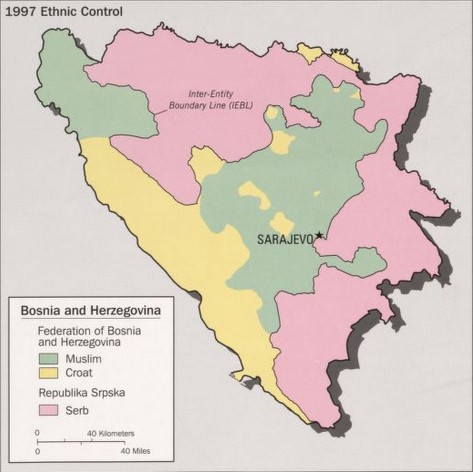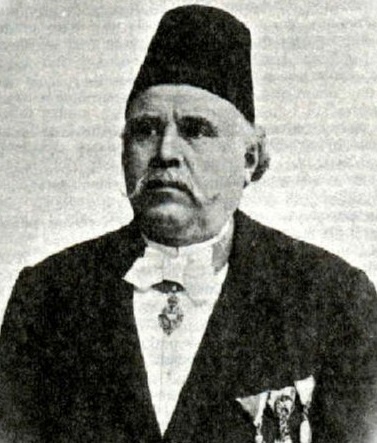|
Cerovac, Tešanj
Cerovac is a village in the municipality of Tešanj Tešanj ( cyrl, Тешањ) is a town and municipality located in the Zenica-Doboj Canton of the Federation of Bosnia and Herzegovina, an entity of Bosnia and Herzegovina. As of 2013, the municipality has a population of 43,063 inhabitants, whil ..., Bosnia and Herzegovina. Demographics According to the 2013 census, its population was 458. References Populated places in Tešanj {{ZenicaDobojCanton-geo-stub ... [...More Info...] [...Related Items...] OR: [Wikipedia] [Google] [Baidu] |
Political Divisions Of Bosnia And Herzegovina
The political divisions of Bosnia and Herzegovina were created by the Dayton Agreement. The agreement divides the country into two federal entities: the Federation of Bosnia and Herzegovina (FBiH) and the Republika Srpska (RS) and one ''Condominium (international law), condominium'' of the two entities named the Brčko District. The vast majority of the population in the Federation of Bosnia and Herzegovina is Bosniaks and Croats of Bosnia and Herzegovina, Croats. In contrast, in Republika Srpska, the vast majority are Serbs of Bosnia and Herzegovina, Serbs. Due to the entities' high powers and the political differences between them, Bosnia and Herzegovina is described as a confederation. Overview The Federation of Bosnia and Herzegovina is split into 10 Cantons of the Federation of Bosnia and Herzegovina, cantons, local governing units endowed with substantial autonomy. In contrast, Republika Srpska operates under a centralised government structure. While the state level ... [...More Info...] [...Related Items...] OR: [Wikipedia] [Google] [Baidu] |
Federation Of Bosnia And Herzegovina
The Federation of Bosnia and Herzegovina (Serbo-Croatian: ''Federacija Bosne i Hercegovine'' / ''Федерација Босне и Херцеговине'') is one of the two Political divisions of Bosnia and Herzegovina, entities composing Bosnia and Herzegovina, the other being Republika Srpska. The Federation of Bosnia and Herzegovina consists of ten autonomous Cantons of the Federation of Bosnia and Herzegovina, cantons with their own governments and legislatures. The Federation was created by the 1994 Washington Agreement (1994), Washington Agreement, which ended the Croat–Bosniak War within the Bosnian War, and established a constituent assembly that continued its work until October 1996. The Federation has a Sarajevo, capital, Government of the Federation of Bosnia and Herzegovina, government, president, parliament, customs and police departments and two postal systems. It occupies about half of the land of Bosnia and Herzegovina. From 1996 until 2005 it had its own a ... [...More Info...] [...Related Items...] OR: [Wikipedia] [Google] [Baidu] |
Cantons Of The Federation Of Bosnia And Herzegovina
The ten Canton (country subdivision), cantons of the Federation of Bosnia and Herzegovina, one of the two entities of Bosnia and Herzegovina, political entities of Bosnia and Herzegovina, are its federal units with a high level of autonomy. The cantons were established by the Law on Federal Units (Cantons) on 12 June 1996 as a result of the Washington Agreement of 1994 between the representatives of the Croats of Bosnia and Herzegovina, Bosnian Croats and Bosniaks. Five of the cantons have a Bosniak majority: Una-Sana Canton, Tuzla Canton, Zenica-Doboj Canton, Bosnian-Podrinje Canton Goražde and Sarajevo Canton; three have a Croat majority: Posavina Canton, West Herzegovina Canton and Canton 10, and the two cantons are regarded as ethnically mixed: Central Bosnia Canton and Herzegovina-Neretva Canton. The most populous canton is Tuzla Canton, while Canton 10 is the largest by area. Creation The cantons of the Federation of Bosnia and Herzegovina are a result of an artificial ... [...More Info...] [...Related Items...] OR: [Wikipedia] [Google] [Baidu] |
Zenica-Doboj Canton
The Zenica-Doboj Canton (; ; ) is one of ten cantons in Bosnia and Herzegovina. It is part of the entity of Federation of Bosnia and Herzegovina. The seat and largest city is Zenica. Spread over an area of , the canton roughly occupies the central areas of the country. With a population of over 0.35 million inhabitants in 2013, it is the third most populous canton in the entity. History Archeological evidence point to human habitation since the Neolithic period. The region was under the rule of the Illyrians, Romans, and Ottomans at various times during the history. During the later Middle Ages, the city of Zenica served as the administrative center of the region. Its location on the banks of the Bosna River made it an important economic center during the Ottoman rule. In the late 19th century, it came under Austro-Hungarian rule, when rapid industrialization took place with the establishment of iron and steel factories, coal mines, and textile mills. This urbanization result ... [...More Info...] [...Related Items...] OR: [Wikipedia] [Google] [Baidu] |
Municipalities Of Bosnia And Herzegovina
In Bosnia and Herzegovina, the smallest administrative unit is the municipality ("''opština''/општина" or "''općina''/опћина" in the official languages and scripts of the country). Prior to the 1992–95 Bosnian War there were 109 municipalities in what was then Socialist Republic of Bosnia and Herzegovina. Ten of these formed the area of the capital Sarajevo. After the war, the number of municipalities was increased to 143, grouped in the following way: *79 municipalities constitute the Federation of Bosnia and Herzegovina (FBiH), which comprises 51% of the country's total territory. The municipalities within the federation are grouped into ten cantons. *64 municipalities constitute the Republika Srpska (RS), which comprises 49% of the country's total territory. In addition, Brčko District does not belong to either entity and is governed as a condominium of both FBiH and RS entities. The district corresponds to the pre-war Brčko municipality. Although tec ... [...More Info...] [...Related Items...] OR: [Wikipedia] [Google] [Baidu] |
Tešanj
Tešanj ( cyrl, Тешањ) is a town and municipality located in the Zenica-Doboj Canton of the Federation of Bosnia and Herzegovina, an entity of Bosnia and Herzegovina. As of 2013, the municipality has a population of 43,063 inhabitants, while the town of Tešanj has a population of 5,257 inhabitants. It is situated in the northern part of Bosnia and Herzegovina. Geography Tešanj is located at an altitude of 230 meters and was built around the river Tešanjka. The town is surrounded by many hills. History The present name of the city was mentioned for the first time in 1461 in a charter from King Stephen Tomašević of Bosnia, Stephen Tomašević to his uncle Radivoj of Bosnia, Radivoj. The charter stated that King Stephen Tomašević grants him, among other possessions "i na Usori grad Tešanj -- the city of Tešanj, in the Usora (region), Usora region". Between the second half of the 15th and the first half of the 16th century, the history of Tešanj was rather chaotic. S ... [...More Info...] [...Related Items...] OR: [Wikipedia] [Google] [Baidu] |
Central European Time
Central European Time (CET) is a standard time of Central, and parts of Western Europe, which is one hour ahead of Coordinated Universal Time (UTC). The UTC offset, time offset from UTC can be written as UTC+01:00. It is used in most parts of Europe and in several African countries. CET is also known as Middle European Time (MET, German: :de:Mitteleuropäische Zeit, MEZ) and by colloquial names such as Amsterdam Time, Berlin Time, Brussels Time, Budapest Time, Madrid Time, Paris Time, Stockholm Time, Rome Time, Prague time, Warsaw Time or Romance Standard Time (RST). The 15th meridian east is the central axis per UTC+01:00 in the world system of time zones. As of 2023, all member state of the European Union, member states of the European Union observe summer time (daylight saving time), from the last Sunday in March to the last Sunday in October. States within the CET area switch to Central European Summer Time (CEST, UTC+02:00) for the summer. The next change to CET is scheduled ... [...More Info...] [...Related Items...] OR: [Wikipedia] [Google] [Baidu] |
Central European Summer Time
Central European Summer Time (CEST, UTC+02:00), sometimes referred to as Central European Daylight Time (CEDT), is the standard clock time observed during the period of summer daylight-saving in those European countries which observe Central European Time (CET; UTC+01:00) during the other part of the year. It corresponds to UTC+02:00, which makes it the same as Eastern European Time, Central Africa Time, South African Standard Time, Egypt Standard Time and Kaliningrad Time in Russia. Names Other names which have been applied to Central European Summer Time are Middle European Summer Time (MEST), Central European Daylight Saving Time (CEDT), and Bravo Time (after the second letter of the NATO phonetic alphabet). Period of observation Since 1996, European Summer Time has been observed between 01:00 UTC (02:00 CET and 03:00 CEST) on the last Sunday of March, and 01:00 UTC on the last Sunday of October; previously the rules were not uniform across the European Union. The ... [...More Info...] [...Related Items...] OR: [Wikipedia] [Google] [Baidu] |
Bosniaks Of Bosnia And Herzegovina
The Bosniaks (, Cyrillic: Бошњаци, ; , ) are a South Slavic ethnic group native to the Southeast European historical region of Bosnia, today part of Bosnia and Herzegovina, and who share a common ancestry, culture, history and the Bosnian language. Traditionally and predominantly adhering to Sunni Islam, they constitute native communities in what is today Bosnia and Herzegovina, Serbia, Montenegro, Croatia and the Republic of Kosovo. Largely due to displacement stemming from the Bosnian War in the 1990s they also make up a significant diaspora with several communities across Europe, the Americas and Oceania. Bosniaks are typically characterized by their historic ties to the Bosnian historical region, adherence to Islam since the 15th and 16th centuries, culture, and the Bosnian language. Bosniaks have also frequently been denoted Bosnian Muslims in the Anglophone sphere mainly owing to this having been the primary verbiage used in the media coverage of the ... [...More Info...] [...Related Items...] OR: [Wikipedia] [Google] [Baidu] |
Croats Of Bosnia And Herzegovina
The Croats of Bosnia and Herzegovina (), often referred to as Bosnian Croats () or Herzegovinian Croats (), are native to Bosnia and Herzegovina and constitute the third most populous ethnic group, after Bosniaks and Serbs of Bosnia and Herzegovina, Serbs. They are also one of the constitutive nations of Bosnia and Herzegovina. Croats of Bosnia and Herzegovina have made significant contributions to the culture of Bosnia and Herzegovina. Most Croats identify themselves as Catholic Church in Bosnia and Herzegovina, Catholics and speak the Croatian language. Between the 15th and 19th centuries, Christianity in the Ottoman Empire, Catholics in Ottoman Bosnia and Herzegovina were often persecuted by the Ottoman Empire, causing many of them to flee the area. In the 20th century, political turmoil and poor economic conditions led to increased emigration. Ethnic cleansing in the Bosnian War, Ethnic cleansing within Bosnia and Herzegovina in the 1990s saw Croats forced to go to different ... [...More Info...] [...Related Items...] OR: [Wikipedia] [Google] [Baidu] |
Serbs Of Bosnia And Herzegovina
The Serbs of Bosnia and Herzegovina ( sr-Cyrl, Срби Босне и Херцеговине, Srbi Bosne i Hercegovine), often referred to as Bosnian Serbs ( sr-cyrl, босански Срби, bosanski Srbi) or Herzegovinian Serbs ( sr-cyrl, херцеговачки Срби, hercegovački Srbi), are native and one of the three Constitutive nations of Bosnia and Herzegovina, constituent nations of the country, predominantly residing in the Political divisions of Bosnia and Herzegovina, political-territorial entity of Republika Srpska. Most declare themselves Eastern Orthodoxy in Bosnia and Herzegovina, Eastern Orthodox Christians and speakers of the Serbian language. Serbs have a long and continuous history of inhabiting the present-day territory of Bosnia and Herzegovina, and a long history of statehood in this territory. Slavs settled the Balkans in the 7th century and the Serbs were one of the main tribes who settled the peninsula including parts of modern-day Herzegovina. P ... [...More Info...] [...Related Items...] OR: [Wikipedia] [Google] [Baidu] |




